#the order of st michael and st george
Text
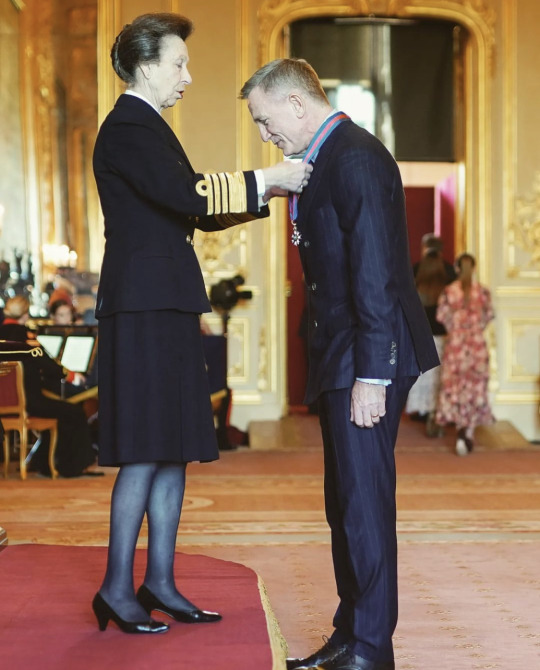
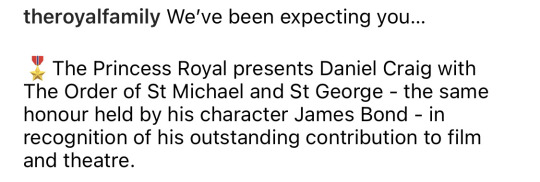
Congratulations to Daniel Craig
(We also deserved to see this scene in Bond)
#daniel craig#princess royal#james bond#007#the order of st michael and st george#danielcraig#jamesbond#princessroyal#congratulations
67 notes
·
View notes
Text

9 June 1961: The Queen, wearing the regalia of the Order of St. Michael and St. George, attended the annual service of the order at St. Paul’s Cathedral.
88 notes
·
View notes
Text
A Guide to Historically Accurate Regency-Era Names

I recently received a message from a historical romance writer asking if I knew any good resources for finding historically accurate Regency-era names for their characters.
Not knowing any off the top of my head, I dug around online a bit and found there really isn’t much out there. The vast majority of search results were Buzzfeed-style listicles which range from accurate-adjacent to really, really, really bad.
I did find a few blog posts with fairly decent name lists, but noticed that even these have very little indication as to each name’s relative popularity as those statistical breakdowns really don't exist.
I began writing up a response with this information, but then I (being a research addict who was currently snowed in after a blizzard) thought hey - if there aren’t any good resources out there why not make one myself?
As I lacked any compiled data to work from, I had to do my own data wrangling on this project. Due to this fact, I limited the scope to what I thought would be the most useful for writers who focus on this era, namely - people of a marriageable age living in the wealthiest areas of London.
So with this in mind - I went through period records and compiled the names of 25,000 couples who were married in the City of Westminster (which includes Mayfair, St. James and Hyde Park) between 1804 to 1821.
So let’s see what all that data tells us…
To begin - I think it’s hard for us in the modern world with our wide and varied abundance of first names to conceive of just how POPULAR popular names of the past were.
If you were to take a modern sample of 25-year-old (born in 1998) American women, the most common name would be Emily with 1.35% of the total population. If you were to add the next four most popular names (Hannah, Samantha, Sarah and Ashley) these top five names would bring you to 5.5% of the total population. (source: Social Security Administration)
If you were to do the same survey in Regency London - the most common name would be Mary with 19.2% of the population. Add the next four most popular names (Elizabeth, Ann, Sarah and Jane) and with just 5 names you would have covered 62% of all women.
To hit 62% of the population in the modern survey it would take the top 400 names.
The top five Regency men’s names (John, William, Thomas, James and George) have nearly identical statistics as the women’s names.
I struggled for the better part of a week with how to present my findings, as a big list in alphabetical order really fails to get across the popularity factor and also isn’t the most tumblr-compatible format. And then my YouTube homepage recommended a random video of someone ranking all the books they’d read last year - and so I present…
The Regency Name Popularity Tier List
The Tiers
S+ - 10% of the population or greater. There is no modern equivalent to this level of popularity. 52% of the population had one of these 7 names.
S - 2-10%. There is still no modern equivalent to this level of popularity. Names in this percentage range in the past have included Mary and William in the 1880s and Jennifer in the late 1970s (topped out at 4%).
A - 1-2%. The top five modern names usually fall in this range. Kids with these names would probably include their last initial in class to avoid confusion. (1998 examples: Emily, Sarah, Ashley, Michael, Christopher, Brandon.)
B - .3-1%. Very common names. Would fall in the top 50 modern names. You would most likely know at least 1 person with these names. (1998 examples: Jessica, Megan, Allison, Justin, Ryan, Eric)
C - .17-.3%. Common names. Would fall in the modern top 100. You would probably know someone with these names, or at least know of them. (1998 examples: Chloe, Grace, Vanessa, Sean, Spencer, Seth)
D - .06-.17%. Less common names. In the modern top 250. You may not personally know someone with these names, but you’re aware of them. (1998 examples: Faith, Cassidy, Summer, Griffin, Dustin, Colby)
E - .02-.06%. Uncommon names. You’re aware these are names, but they are not common. Unusual enough they may be remarked upon. (1998 examples: Calista, Skye, Precious, Fabian, Justice, Lorenzo)
F - .01-.02%. Rare names. You may have heard of these names, but you probably don’t know anyone with one. Extremely unusual, and would likely be remarked upon. (1998 examples: Emerald, Lourdes, Serenity, Dario, Tavian, Adonis)
G - Very rare names. There are only a handful of people with these names in the entire country. You’ve never met anyone with this name.
H - Virtually non-existent. Names that theoretically could have existed in the Regency period (their original source pre-dates the early 19th century) but I found fewer than five (and often no) period examples of them being used in Regency England. (Example names taken from romance novels and online Regency name lists.)
Just to once again reinforce how POPULAR popular names were before we get to the tier lists - statistically, in a ballroom of 100 people in Regency London: 80 would have names from tiers S+/S. An additional 15 people would have names from tiers A/B and C. 4 of the remaining 5 would have names from D/E. Only one would have a name from below tier E.
Women's Names
S+ Mary, Elizabeth, Ann, Sarah
S - Jane, Mary Ann+, Hannah, Susannah, Margaret, Catherine, Martha, Charlotte, Maria
A - Frances, Harriet, Sophia, Eleanor, Rebecca
B - Alice, Amelia, Bridget~, Caroline, Eliza, Esther, Isabella, Louisa, Lucy, Lydia, Phoebe, Rachel, Susan
C - Ellen, Fanny*, Grace, Henrietta, Hester, Jemima, Matilda, Priscilla
D - Abigail, Agnes, Amy, Augusta, Barbara, Betsy*, Betty*, Cecilia, Christiana, Clarissa, Deborah, Diana, Dinah, Dorothy, Emily, Emma, Georgiana, Helen, Janet^, Joanna, Johanna, Judith, Julia, Kezia, Kitty*, Letitia, Nancy*, Ruth, Winifred>
E - Arabella, Celia, Charity, Clara, Cordelia, Dorcas, Eve, Georgina, Honor, Honora, Jennet^, Jessie*^, Joan, Joyce, Juliana, Juliet, Lavinia, Leah, Margery, Marian, Marianne, Marie, Mercy, Miriam, Naomi, Patience, Penelope, Philadelphia, Phillis, Prudence, Rhoda, Rosanna, Rose, Rosetta, Rosina, Sabina, Selina, Sylvia, Theodosia, Theresa
F - (selected) Alicia, Bethia, Euphemia, Frederica, Helena, Leonora, Mariana, Millicent, Mirah, Olivia, Philippa, Rosamund, Sybella, Tabitha, Temperance, Theophila, Thomasin, Tryphena, Ursula, Virtue, Wilhelmina
G - (selected) Adelaide, Alethia, Angelina, Cassandra, Cherry, Constance, Delilah, Dorinda, Drusilla, Eva, Happy, Jessica, Josephine, Laura, Minerva, Octavia, Parthenia, Theodora, Violet, Zipporah
H - Alberta, Alexandra, Amber, Ashley, Calliope, Calpurnia, Chloe, Cressida, Cynthia, Daisy, Daphne, Elaine, Eloise, Estella, Lilian, Lilias, Francesca, Gabriella, Genevieve, Gwendoline, Hermione, Hyacinth, Inez, Iris, Kathleen, Madeline, Maude, Melody, Portia, Seabright, Seraphina, Sienna, Verity
Men's Names
S+ John, William, Thomas
S - James, George, Joseph, Richard, Robert, Charles, Henry, Edward, Samuel
A - Benjamin, (Mother’s/Grandmother’s maiden name used as first name)#
B - Alexander^, Andrew, Daniel, David>, Edmund, Francis, Frederick, Isaac, Matthew, Michael, Patrick~, Peter, Philip, Stephen, Timothy
C - Abraham, Anthony, Christopher, Hugh>, Jeremiah, Jonathan, Nathaniel, Walter
D - Adam, Arthur, Bartholomew, Cornelius, Dennis, Evan>, Jacob, Job, Josiah, Joshua, Lawrence, Lewis, Luke, Mark, Martin, Moses, Nicholas, Owen>, Paul, Ralph, Simon
E - Aaron, Alfred, Allen, Ambrose, Amos, Archibald, Augustin, Augustus, Barnard, Barney, Bernard, Bryan, Caleb, Christian, Clement, Colin, Duncan^, Ebenezer, Edwin, Emanuel, Felix, Gabriel, Gerard, Gilbert, Giles, Griffith, Harry*, Herbert, Humphrey, Israel, Jabez, Jesse, Joel, Jonas, Lancelot, Matthias, Maurice, Miles, Oliver, Rees, Reuben, Roger, Rowland, Solomon, Theophilus, Valentine, Zachariah
F - (selected) Abel, Barnabus, Benedict, Connor, Elijah, Ernest, Gideon, Godfrey, Gregory, Hector, Horace, Horatio, Isaiah, Jasper, Levi, Marmaduke, Noah, Percival, Shadrach, Vincent
G - (selected) Albion, Darius, Christmas, Cleophas, Enoch, Ethelbert, Gavin, Griffin, Hercules, Hugo, Innocent, Justin, Maximilian, Methuselah, Peregrine, Phineas, Roland, Sebastian, Sylvester, Theodore, Titus, Zephaniah
H - Albinus, Americus, Cassian, Dominic, Eric, Milo, Rollo, Trevor, Tristan, Waldo, Xavier
# Men were sometimes given a family surname (most often their mother's or grandmother's maiden name) as their first name - the most famous example of this being Fitzwilliam Darcy. If you were to combine all surname-based first names as a single 'name' this is where the practice would rank.
*Rank as a given name, not a nickname
+If you count Mary Ann as a separate name from Mary - Mary would remain in S+ even without the Mary Anns included
~Primarily used by people of Irish descent
^Primarily used by people of Scottish descent
>Primarily used by people of Welsh descent
I was going to continue on and write about why Regency-era first names were so uniform, discuss historically accurate surnames, nicknames, and include a little guide to finding 'unique' names that are still historically accurate - but this post is already very, very long, so that will have to wait for a later date.
If anyone has any questions/comments/clarifications in the meantime feel free to message me.
Methodology notes: All data is from marriage records covering six parishes in the City of Westminster between 1804 and 1821. The total sample size was 50,950 individuals.
I chose marriage records rather than births/baptisms as I wanted to focus on individuals who were adults during the Regency era rather than newborns. I think many people make the mistake when researching historical names by using baby name data for the year their story takes place rather than 20 to 30 years prior, and I wanted to avoid that. If you are writing a story that takes place in 1930 you don’t want to research the top names for 1930, you need to be looking at 1910 or earlier if you are naming adult characters.
I combined (for my own sanity) names that are pronounced identically but have minor spelling differences: i.e. the data for Catherine also includes Catharines and Katherines, Susannah includes Susannas, Phoebe includes Phebes, etc.
The compound 'Mother's/Grandmother's maiden name used as first name' designation is an educated guesstimate based on what I recognized as known surnames, as I do not hate myself enough to go through 25,000+ individuals and confirm their mother's maiden names. So if the tally includes any individuals who just happened to be named Fitzroy/Hastings/Townsend/etc. because their parents liked the sound of it and not due to any familial relations - my bad.
I did a small comparative survey of 5,000 individuals in several rural communities in Rutland and Staffordshire (chosen because they had the cleanest data I could find and I was lazy) to see if there were any significant differences between urban and rural naming practices and found the results to be very similar. The most noticeable difference I observed was that the S+ tier names were even MORE popular in rural areas than in London. In Rutland between 1810 and 1820 Elizabeths comprised 21.4% of all brides vs. 15.3% in the London survey. All other S+ names also saw increases of between 1% and 6%. I also observed that the rural communities I surveyed saw a small, but noticeable and fairly consistent, increase in the use of names with Biblical origins.
Sources of the records I used for my survey:
Ancestry.com. England & Wales Marriages, 1538-1988 [database on-line].
Ancestry.com. Westminster, London, England, Church of England Marriages and Banns, 1754-1935 [database on-line].
#history#regency#1800s#1810s#names#london#writing resources#regency romance#jane austen#bridgerton#bridgerton would be an exponentially better show if daphne's name was dorcas#behold - the reason i haven't posted in three weeks
10K notes
·
View notes
Text
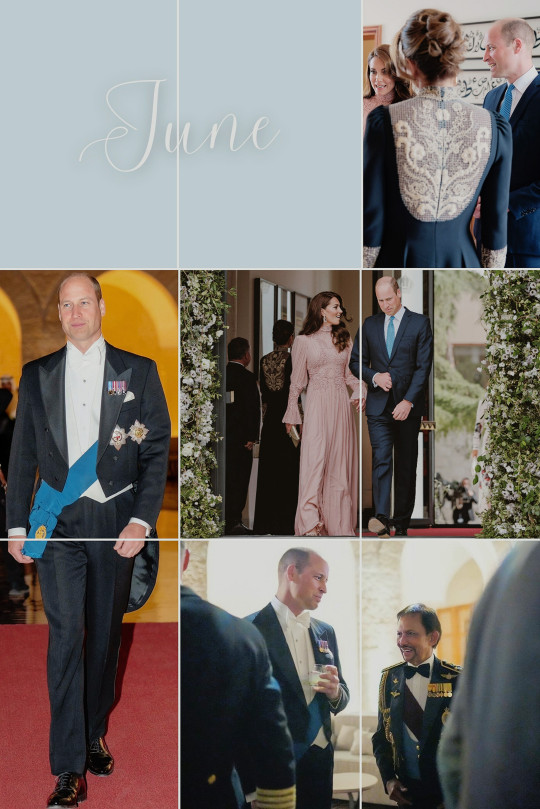
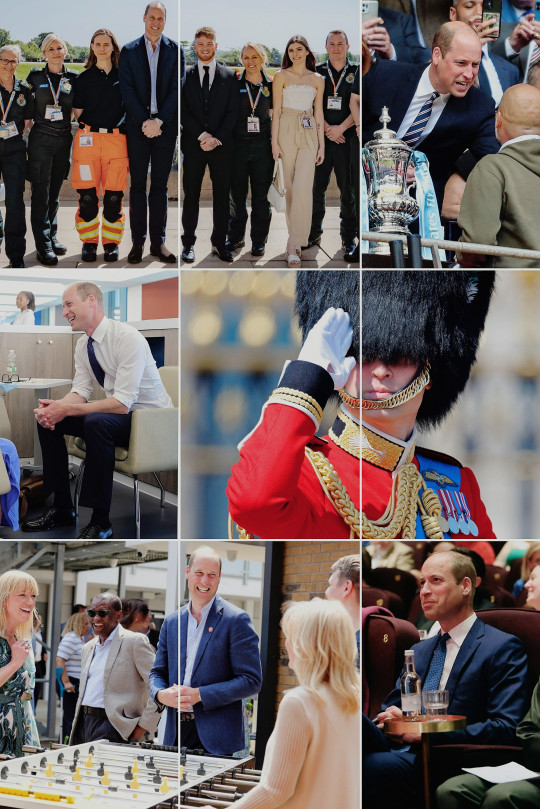
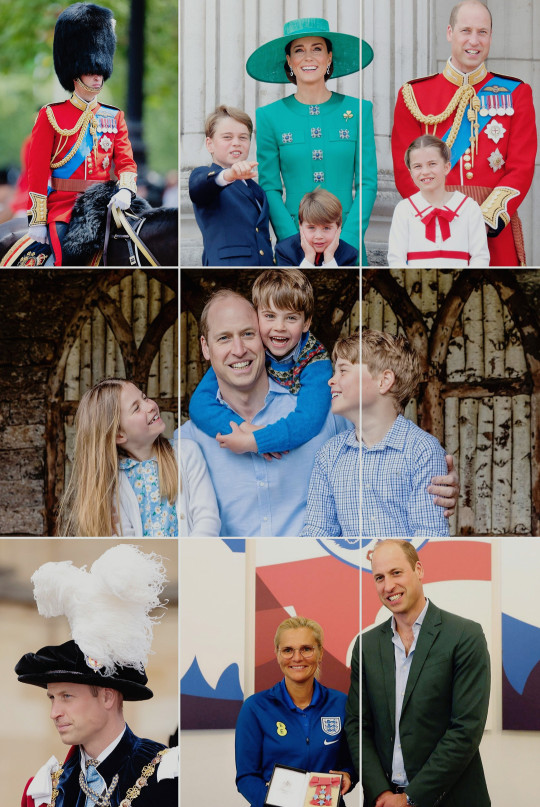



─ •✧ WILLIAM'S YEAR IN REVIEW : JUNE ✧• ─
1 JUNE - William and Catherine attended the Marriage of Crown Prince Hussein of Jordan with Miss Rajwa Al Saif at the Zahran Palace. Afterwards, they attended the State Banquet in Hussein and Rajwa's honour.
2 JUNE - William held a Meeting with Jack Beeton, a crash survivor he helped save while he was with the air ambulance.
3 JUNE - William attended the Men's FA Cup Final between Manchester City & Manchester United.
6 JUNE - William held a Meeting to mark Pride Month.
7 JUNE - He received the Rt. Hon. Sir Keir Starmer MP (Leader of Opposition).
8 JUNE - William was received the Deputy Lieutenant of Greater London as he opened the Oak Cancer Centre at the Royal Marsden.
10 JUNE - He took the salute at the Colonel's Review of The King's Birthday Parade.
13 JUNE - William was received by the Lord-Lieutenant of Greater London as he opened Centrepoint's Reuben House housing development. Afterwards, he held a Meeting with Dr. Jayne Brady (Head of Civil Service, Northern Ireland) via telephone. Subsequently, he was joined by The Duchess of Edinburgh for the Screening of "Rhino Man".
14 JUNE - William held a Meeting with the Rt. Hon. Humza Yousaf MSP (First Minister of Scotland) via telephone. Later, he had a telephonic Meeting with the Rt. Hon. Mark Drakeford MS (First Minister of Wales).
16 JUNE - William and Catherine attended the Senior Colonels' Conference and Dinner at Clarence House.
17 JUNE - William took part in The King's Birthday Parade on Horse Guards Parade. Later, he appeared on the Balcony along with Catherine and their children for the RAF fly-past.
18 JUNE - William appeared in Father's Day Portraits released by Kensington Palace with George, Charlotte and Louis.
19 JUNE - William and Catherine attended a Chapter of the Most Noble Order of the Garter in the Throne Room at Windsor Castle. Afterwards, they were present at the Luncheon Party for the Companions of the Garter. Subsequently, they attended the Order of the Garter Installation Service at St George's Chapel.
20 JUNE - William visited St George's Park and was received by the Lord-Lieutenant of Staffordshire. He wrote a letter to Oscar Burrow congratulating him for his fundraising efforts.
21 JUNE - William celebrated his 41st Birthday. To mark the day, Buckingham Palace released a Birthday Portrait featuring William and The King. He visited Eton College with Catherine and George.
22 JUNE - William received Ms Hannah Jones (Chief Executive, the Earthshot Prize). Afterwards, he held a Meeting at Windsor Castle. He appeared in a video message marking Windrush Day. A special documentary - 'Pride of Britain: A Windrush Special' with an appearance from Willliam was announced.
23 JUNE - William and Catherine attended the Ascot Races. Later, they were spotted at KOKO.
25 JUNE - William launched 'Homewards' and held a Meeting with Homewards Advocates.
26 JUNE - William appeared in a video for Homewards. He embarked on a 2-Day Homewards Launch Tour and visited Mosaic Clubhouse in London, where he was received by the Deputy Lieutenant of Greater London. Afterwards, he was received by His Majesty's Lord-Lieutenant of Dorset at St John's Church Hall in Poole. Subsequently, William visited Maindee Primary School & Hill Street Housing Development and was received by the Vice Lord-Lieutenant of Gwent.
27 JUNE - William visited East Belfast Mission in Belfast and was received by His Majesty's Lord-Lieutenant of the County Borough of Belfast. Afterwards, he was received by the Lord-Lieutenant of the City of Aberdeen at the Tillydrone Community Campus. Finally, he visited Verdon Recreation Centre in Sheffield and was received by the Vice Lord-Lieutenant of South Yorkshire.
28 JUNE - William held an Investiture at Windsor Castle.
29 JUNE - He was received by His Majesty's Lord-Lieutenant of Norfolk at the Royal Norfolk Show.
30 JUNE - William appeared in a video for Pride Month along with Michael Lister, Alexis Caught and Sharvari Patil discussing mental health in the LGBTQ+ community. He also appeared in a video message for the 2023 Diana Award.
#review 2023#review june#british royal family#british royals#royalty#royals#brf#royal#british royalty#year in review : william#year in review : 2023#william review : june#year in review 2023 : william#prince of wales#the prince of wales#prince william#princess of wales#the princess of wales#princess catherine#princess kate#prince and princess of wales#the prince and princess of wales#royaltyedit#royalty edit#princess charlotte#prince george#prince louis#kate middleton#catherine middleton#duchess of cambridge
45 notes
·
View notes
Text
on this day in 1968
Order of St. Michael and St. George
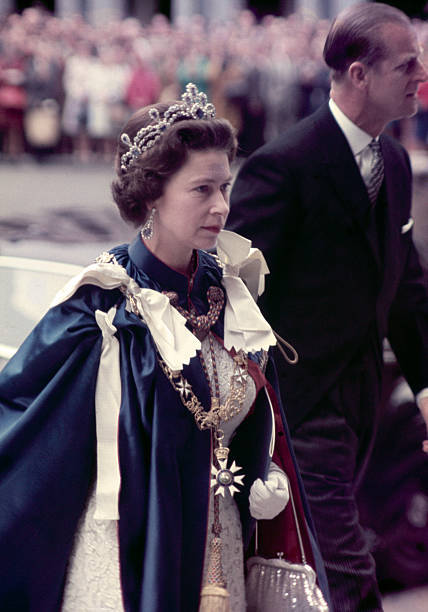
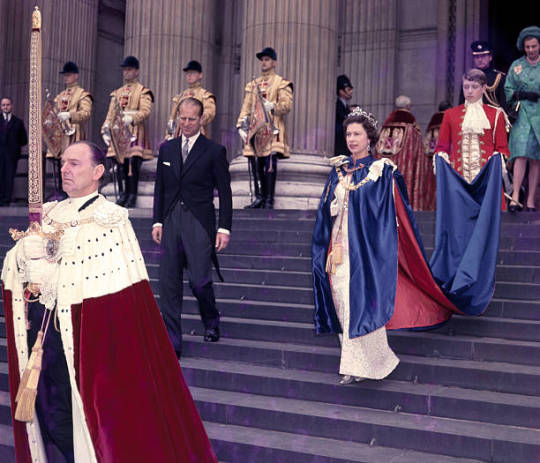
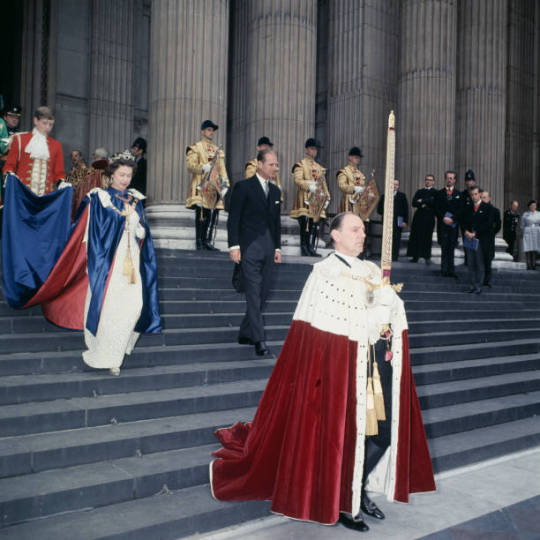


Queen Elizabeth II and Prince Philip, Duke of Edinburgh at St Paul's Cathedral, London for attending the annual service of the Order of St Michael and St George, UK, 24th July 1968.
59 notes
·
View notes
Text
THIS DAY IN GAY HISTORY
based on: The White Crane Institute's 'Gay Wisdom', Gay Birthdays, Gay For Today, Famous GLBT, glbt-Gay Encylopedia, Today in Gay History, Wikipedia, and more … May 1
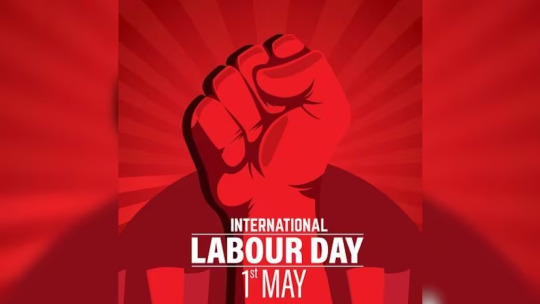


1650 – Following the beheading of Charles I and Oliver Cromwell's rise to power, sodomy was made punishable by death in England, along with adultery.

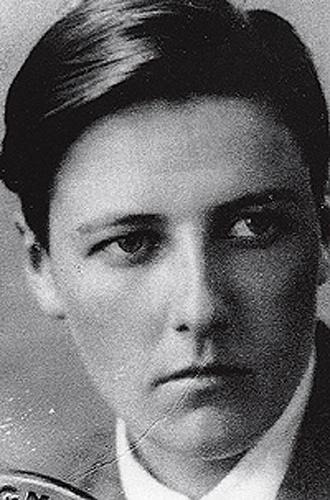
1915 – Laurence Michael Dillon (born Laura Maud Dillon; d.1962) was a British physician and the first female-to-male transsexual to undergo phalloplasty.
Dillon, then physically female and known as Laura, was raised with his older brother Bobby by their two aunts in Kent, England. He received his undergraduate education at Oxford, where he was president of the Woman's Boat Club and won a University Sporting Blue award for rowing. After graduating he took a job at a research laboratory.
Dillon had long been more comfortable in men's clothing and felt that he was not truly a woman. In 1939, he sought treatment from Dr. George Foss, who had been experimenting with testosterone; at the time, the hormone's masculinizing effects were poorly understood. Foss provided Dillon with testosterone pills but insisted Dillon consult a psychiatrist first, who gossiped about Dillon's desire to become a man, and soon the story was all over town.
Dillon fled to Bristol and took a job at a garage. The hormones soon made it possible for him to pass as male, and eventually the garage manager insisted that other employees refer to Dillon as "he" in order to avoid confusing customers. Dillon was promoted to tow truck driver and doubled as a fire watcher during the Blitz.
Dillon happened to come to the attention of one of the world's few practitioners of plastic surgery. The surgeon performed a double mastectomy, provided Dillon with a doctor's note that enabled him to change his birth certificate, and put him in touch with the pioneering plastic surgeon Harold Gillies.
Gillies had previously reconstructed penises for injured soldiers and performed surgery on intersexual people with ambiguous genitalia. He was willing to perform a phalloplasty, but not immediately; the constant influx of wounded soldiers from World War II already kept him in the operating room around the clock.
In the meantime Dillon enrolled in medical school at Trinity College, Dublin under his new legal name, Laurence Michael Dillon. A former tutor of Dillon's persuaded the Oxford registrar to alter records to show that he had graduated from Brasenose rather than the women's college St. Anne's, so that his academic transcript would not raise questions. Again he became a distinguished rower — this time for the men's team.
Gillies performed at least 13 surgeries on Dillon between 1946 and 1949. He officially diagnosed Dillon with acute hypospadias in order to conceal the fact that he was performing sex-reassignment surgery. Dillon, still a medical student at Trinity, blamed war injuries when infections caused a temporary limp. In what little free time he had he enjoyed dancing, but he avoided forming close relationships with women, for fear of exposure and in the belief that "One must not lead a girl on if one could not give her children." He deliberately cultivated a misogynist reputation to prevent any such problematic attachments
Dillon's story came to light in 1958 as an indirect result of his aristocratic background. Debrett's Peerage, a genealogical guide, listed him as heir to his brother's baronetcy, while its competitor Burke's Peerage mentioned only a sister, Laura Maude. When the discrepancy was noticed, he told the press he was a male born with a severe form of hypospadias and had undergone a series of operations to correct the condition. The editor of Debrett's told Time Magazine that Dillon was unquestionably next in line for the baronetcy: "I have always been of the opinion that a person has all rights and privileges of the sex that is, at a given moment, recognized."
The unwanted press attention led Dillon to flee to India, where he spent time with Sangharakshita in Kalimpong, and with the Buddhist community in Sarnath before he turned to the Tibetan branch of Buddhism. He was ordained a novice monk of the Gelukpa order, taking the name Lobzang Jivaka, and spent his time studying Buddhism and writing. Despite the language barrier he felt at home there, but was forced to leave when his visa expired. His health failed, and he died in hospital at Dalhousie, Punjab, on 15 May 1962, aged 47.

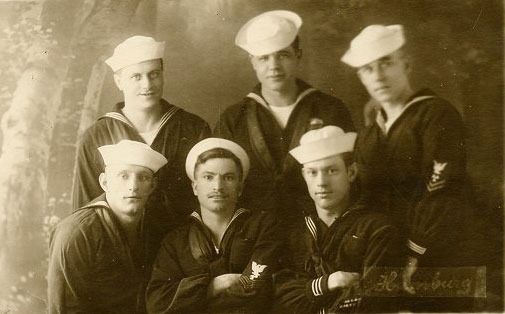
1919 – The US military announced the findings of a court of inquiry, declaring that sufficient evidence existed to court-martial fifteen sailors for sodomy.

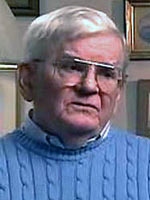
1922 – Tad Mosel (d.2008) was an American playwright and one of the leading dramatists of hour-long teleplay genre for live television during the 1950s. He received the 1961 Pulitzer Prize for Drama for his play All the Way Home.
Mosel's interest in theater began in 1936 when he saw Katharine Cornell on Broadway in George Bernard Shaw's Saint Joan. After the attack on Pearl Harbor, Mosel dropped out of Amherst College to enlist in the Army. During World War II, he was a Sergeant in the U.S. Air Force Weather Service (1943-46) as a weather observer, including one year in the South Pacific. In the post-WWII years he finished at Amherst and did graduate studies at the Yale Drama School (BA), followed by a Master's at Columbia University. He was writing plays while auditioning as an actor, and in 1949 he was on Broadway in the scene-stealing, non-speaking role of a confused private in the farce, At War with the Army.
His first teleplay was performed on Chevrolet Tele-Theater in 1949. During the early 1950s, he became a leading scripter for live television dramas, contributing six teleplays to Goodyear Television Playhouse, two to Medallion Theatre and four to Playhouse 90. He also wrote for The Philco Television Playhouse, Producers' Showcase and Studio One. After Eileen Heckart appeared in his 1953 play about a troubled marriage, The Haven, Mosel and Heckart became friends, and he wrote several scripts especially for her, including the 1953 Other People's Houses about a housekeeper caring for her senile father.
In 1997, Mosel recalled:
Paddy Chayefsky, Horton Foote, Sumner Locke Elliott, JP Miller and all of the group of writers that I knew, we grew up at the same time, and our eyes were on the theater. That was the Emerald City. That was the goal. Now, television came on after World War II, and television was a pauper. It had no money. No "self-respecting writer" would deign to write for television. Even drunken screenwriters wouldn't write for television. So who was there left? It was us. It was kids who would work for 65 cents. And so with a very patronizing attitude you thought, "Well, if I could make a few bucks doing that, it would give me time to write the great American play." It didn't take too much experience to realize that television was a medium all in itself, and that it was a career all in itself, and it was a thrilling one. But we stumbled into it by being snobs if I may say so. They would give anyone a chance. I look back on it, and I think, "Weren't we lucky to be there?"
Mosel's death at age 86 of esophageal cancer came after 18 years of residency at a Concord, New Hampshire retirement community where he often lectured. He was preceded in death in 1995 by his partner of more than 40 years, McCall's magazine graphic designer, Raymond Tatro.


1935 – Fabrice Emaer (d.1983) called "The Prince of the night" was an impresario whose nightclubs le Sept, and le Palace, were the premier spots in Paris nightlife in the 1970s and early 1980s, celebrated in memoirs and songs like Amanda Lear's 1979 song "Fashion Pack" which declared, "In Paris you got to be seen at Maxim's / The Palace / The 7 and then go Chez Regine."
Born May 1, 1935, Francis Paul Emaer grew up in Wattrelos near Lille in northern France. His father was a traveling salesman for the local spinning mills, and his untimely death left the family impoverished. At seventeen, he left his family and traveled North Africa and the French Riviera, before settling in Paris. By then, he had changed his name to the more elegant Fabrice, and worked as a stylist and make-up artist. He opened his first club, "Le Pimm's Bar," in 1964. Le Pimm's evolved into the premier gay club on Saint-Anne Street, situated in the heart of the gay neighborhood near L'Opera that was packed with bars, bathhouses, and prostitutes. The clientele was almost exclusively gay men who were there to cruise.
He had different ideas in 1968 when he took over another place down the block at 7, Saint-Anne Street. The Sept had a restaurant on the ground floor with a small dance floor in the basement which he decorated simply, with mirrors on the walls and a ceiling with multicolored lights that flashed with the music.
"...the greatest innovation of Le Sept was that it was defined by glamour, not homosexuality. Everyone came – gay, straight, and the undecided. 'You didn't have to be rich, you didn't have to be famous,' says former Le Sept DJ Guy Cuevas, 'you had to be beautiful.'"
Emaer himself fit the bill. He was handsome and charming. When Guy Cuevas took over at the turntables, the Sept became the "epicenter of disco", attracting all of Paris.
And after a visit to New York in 1977, Emaer returned with even greater ambitions—to create the Parisian answer to Studio 54 which he found impressive and repulsive at the same time. "It is completely sterilized, a ghetto for model agencies and Régine's emirs...." He sneered at the clientele which was "totally clean, beautiful, they look like they are fed on best quality corn."
Following the recommendation of then culture minister Michel Guy, Emaer chose as his address the decrepit Palace Theater on rue Faubourg Montmartre which would allow him not just a huge disco, but the accoutrements of a traditional theater space with stages and an enormous balcony. He restored the architecturally classified building, including the decor of the '30s, hired a huge team of party organizers and press people to promote the club, and brought Guy Cuevas as DJ from the Sept.
Again, he was met with success. The opening night, May 1, 1978, was packed. Clubgoers loved the music and Emaer's talent for creating a compelling crowd. At the entry, Emaer instructed Edwige and Paquita Paquin to choose an interesting mix of rich and poor, gay and straight, black and white, the bourgeois, even punk. Above all they looked for attitude and an interesting look.
The jetset followed Emaer from the Sept, along with thousands of others, from Alain Pacadis of the newspaper Libération who frequently evoked le Palace and its regulars in his chronicles to young journalist Frédéric Mitterrand, an unknown Madonna, and the famous Paloma Picasso whose wedding celebration eventually became a Palace event.
Emaer's only misstep came in 1981 when he broke the taboo against meddling in French politics, and one night asked the crowd to vote for François Mitterrand, who would become the first French President of the left in decades.
Emaer had never hidden his political leanings. He was openly gay and at some point even described himself as a "homosexual militant" whose commercial activities helped to build a sense of community among French homosexuals. He offered a Sunday "Tea Dance" free for gay men, and used the theater's giant screen to call attention to Argentina's disappeared.
But Paquita Paquin in her memoir, "Twenty Years Without Sleeping," remembered that his direct call to vote for Mitterrand left many of the clubgoers appalled. A large number returned their membership cards to "Privilege" the VIP lounge at the Palace.
That paired with the fading of disco, began to empty the club. By the time Emaer died of cancer two years later in 1983, Le Palace was struggling to fill its enormous dance floors.

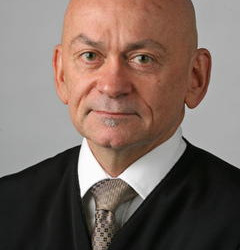
1949 – Ronald E. Albers is a judge of the San Francisco County Superior Court.
A Democrat, Albers was selected on June 11, 2009 to serve on the San Francisco County Superior Court by Republican Governor Arnold Schwarzenegger. He was sworn in on June 15, 2009.
Albers was the first openly gay judge appointed by Schwarzenegger and is believed to be the first openly gay judge appointed by a Republican California governor.
Albers married his long-time partner, Colin Alexander, on June 17, 2008.


1954 – Alan Poul is an American film and television producer and director.
Poul served as executive producer for the HBO original series, Six Feet Under, on which he made his directing debut. He directed four episodes of the series from seasons two through five.
He later directed the pilot for CBS' series Swingtown, of which he directed a total of four episodes. He also directed the 2010 CBS Films romantic comedy The Back-Up Plan, originally titled Plan B.
He signed a new deal with HBO in April 2011. He was an executive producer of Aaron Sorkin's The Newsroom. He also directed five episodes of the show in the first two seasons.
Poul has been nominated for 7 Primetime Emmys, a Directors Guild of America award, and won a News & Documentary Emmy Award in Outstanding Historical Program for The Pacific Century.
He is married to Ari Karpel, an English and Theatre teacher.


1962 – Trebor Healey is an American poet and novelist.
He was born in San Francisco, raised in Seattle, and studied English and American Literature at the University of California, Berkeley. He spent his twenties in San Francisco, where he was active in the spoken word scene of the late 1980s and early 1990s, publishing five chapbooks of poetry as well as numerous poems and short stories in various reviews, journals, anthologies and zines.
In 2013 Lambda announced Trebor Healey as an outstanding mid-career novelist and the next day he won his second Ferro-Grumley Award for his moving, road trip novel A Horse Named Sorrow, also a Lammy finalist and still not released in paperback. It was published in October 2012 simultaneously with his speculative young adult novel Faun, about a boy whose changes at puberty are hairier and more pointed than yours were. Trebor won his first Ferro-Grumley, and a Violet Quill award, for Through It Came Bright Colors about 21-year-old suburban good boy Neill who breaks the stress of his family's struggles with his brother's cancer by sneaking into San Francisco for sex with men. Trebor's other books are Sweet Son of Pan, A Perfect Scar, and Queer and Catholic. His work is anthologized in many collections including Madder Love: Queer Men and the Precincts of Surrealism and multiple volumes of Best Gay Erotica.
Fifteen years before he was a PEN Emerging Voices mentor, he wrote a song for Pansy Division called Denny that foreshadows his fiction: smart, dark, quirky, angry, and funny.
He is openly gay and is currently living in Los Angeles.


1975 – Published reports confirm that Paul Newman is having financing trouble with his attempt to bring an adaptation of the Gay classic "The Front Runner" to screen. Newman eventually allows his option to lapse.

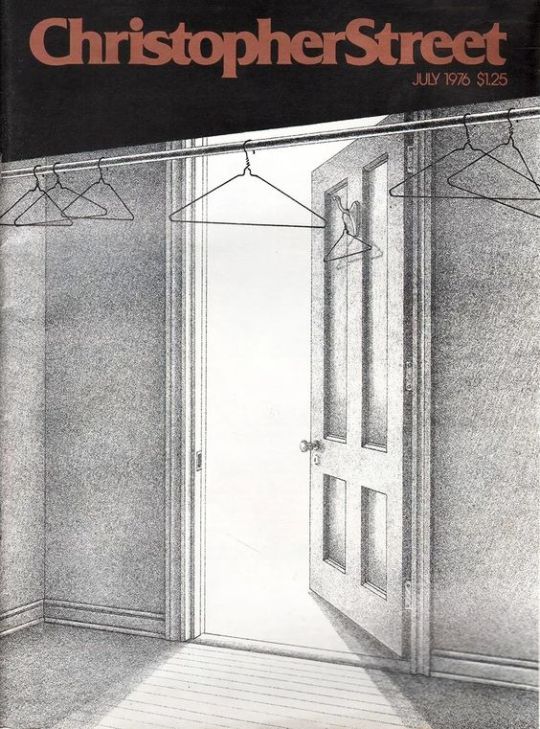
The First Issue
1976 – Christopher Street magazine debuts. The gay-oriented magazine published in New York City was known both for its serious discussion of issues within the gay community and its satire of anti-homosexual criticism. It was one of the two most-widely read gay-issues publications in the United States. Christopher Street covered politics and culture and its aim was to become a gay New Yorker. The magazine featured original fiction from such notable authors as Andrew Holleran as well as emerging new gay writers. Christopher Street printed 231 issues before closing its doors in December of 1995.


1996 – In the Australian Capital Territory, a policy went into effect allowing gay partners to have their inheritance rights recognized under probate law.


16 notes
·
View notes
Text

We’ve been expecting you…
🎖️The Princess Royal presents Daniel Craig with The Order of St Michael and St George - the same honour held by his character James Bond - in recognition of his outstanding contribution to film and theatre.
@RoyalFamily | 18 October 2022
#excellent#I love this#princess anne#princess royal#daniel craig#anne does stuff#annevestitures#workanne 9 to 5#british royal family#brf#james bond
253 notes
·
View notes
Note
To be a member of the Companions of Honour is not meaningless. It is a significant order and it has been given to some very worthy people, including David Attenborough, artist David Hockney, Judi Dench, and Paul McCartney
And to not a single Royal because its too meaningless for them. They only get more important orders while commoner catherine only gets the lowest of the lowest
Hi Nonny,
The royals do award themselves the higher honours, but the Companion of Honour is not too bad in the rankings. The list below shows where it is to be worn with respect to other honours (the list goes from highest to lowest, and there are a lot of other honours in other lists that come after this one). Catherine is a Royal Companion of the Companions of Honour, and not a normal member, so I'm not sure if that will bump the ranking of her honour up a few places or not.
The honour seems to be in keeping with the one she already has, the Grand Cross of the Victorian Order. I would have preferred her to get a higher order, but apart from the Garter and the Thistle, I'm not sure if she qualifies for any of the others, and those two are being withheld by King Charles for some reason.
I've put both her honours in bold and italics.
Order of Wear
Victoria Cross VC
George Cross GC
Knight/Lady Companion of the Order of the Garter KG/LG
Knight/Lady of the Order of the Thistle KT/LT
Knight/Dame Grand Cross of the Order of the Bath GCB
Member of the Order of Merit OM
Baronet's Badge Bt
Knight/Dame Grand Cross of the Order of St Michael and St George GCMG
Knight/Dame Grand Cross of the Royal Victorian Order GCVO
Knight/Dame Grand Cross of the Order of the British Empire GBE
Member of the Order of the Companions of Honour CH
Knight/Dame Commander of the Order of the Bath KCB/DCB
Knight/Dame Commander of the Order of St Michael and St George KCMG/DCMG
Knight/Dame Commander of the Royal Victorian Order KCVO/DCVO
Knight/Dame Commander of the Order of the British Empire KBE/DBE
Knight Bachelor
Companion of the Order of the Bath CB
Companion of the Order of St Michael and St George CMG
Commander of the Royal Victorian Order CVO
Commander of the Order of the British Empire CBE
Companion of the Distinguished Service Order DSO
Lieutenant of the Royal Victorian Order LVO
Officer of the Order of the British Empire OBE
Companion of the Imperial Service Order ISO
Member of the Royal Victorian Order MVO
Member of the Order of the British Empire MBE
from https://en.wikipedia.org/wiki/United_Kingdom_honours_order_of_wearing
11 notes
·
View notes
Note
Right, I looked at the Duke of Kent's patronages and this is what I'd do, although this is far from all of them
William:
Blood Cancer UK
Commonwealth War Graves Commission
Countryside Alliance (since 1997) previously British Field Sports Society
National Army Museum
Royal Aeronautical Society
Royal Air Force Charitable Trust
Royal National Lifeboat Institution (this is one of QEII's though, DoK is President so I'd put W as Patron)
St Mungo's
The Most Distinguished Order of St Michael and St George as Grand Master (but I would prefer if William was Grand Master over The Order of the Bath if I had to choose)
Catherine:
1st Battalion, The Rifles
Bletchley Park Trust
London Philharmonic Orchestra
Trinity College London
William (and Catherine, but mostly W) should also be awarded the Freedom of the City of London
you basically nailed it as far as all my wishes
I would add the Scots for William too
29 notes
·
View notes
Text
Day 8 - Estella to Los Arcos 21.5km 384m
Yesterday evening we went looking for an ATM. But we passed a restaurant that was open and serving food at 5.30! We were hungry so an early couple of plates of pasta it was. The pasta was fresh and just something different from the pilgrims menu we have been eating so far. There was a bit of confusion over my desert. I ordered creme brulee only to get creme caramel which I detest. So I explained they had the wrong description of the desert on their menu. I did try and eat it but it just confirmed that I really do not like creme caramel.
And we went into the church of San Miguel on the way home (having eventually found an ATM). The church was empty and no lights were on. Such a strange atmosphere we were both spooked. I insisted on taking photos and Carrie left - on my own I very quickly departed!

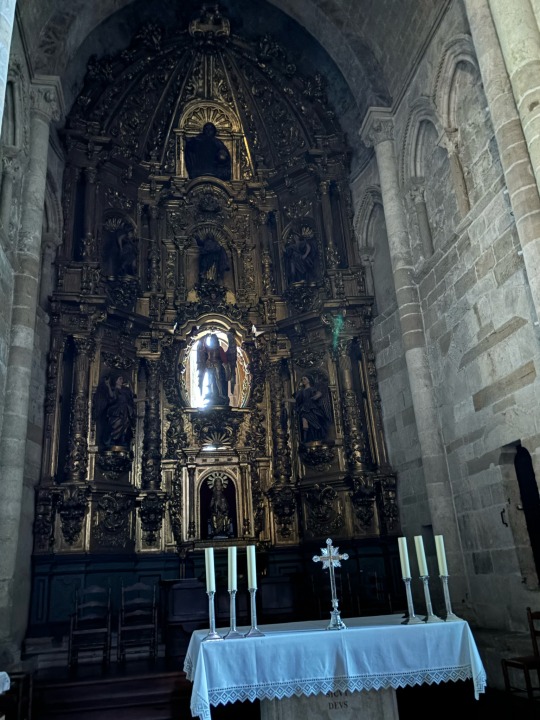
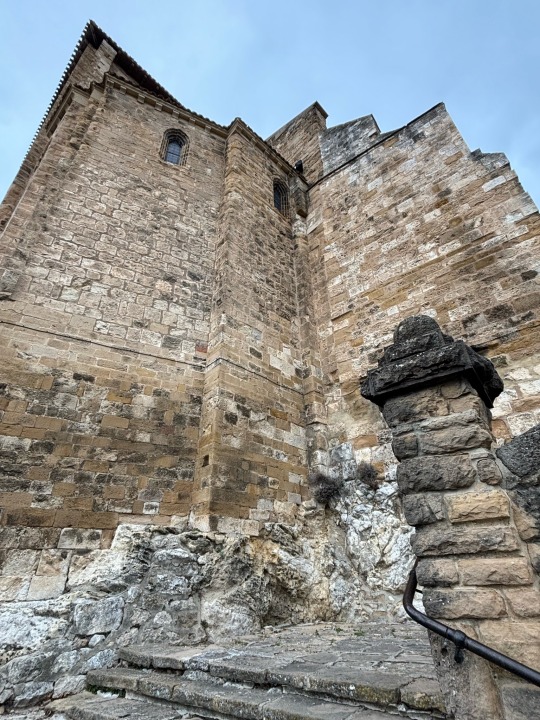
The photo of the knight on horseback is St George apparently. Its in the side chapel which was boarded up with a tiny chink I managed to capture the statue. Apparently it was the subject of much controversy due to a botched up restoration so that might be why its not on display.
Next morning there was indecision about having or not having breakfast. I scouted the menu and we decided to eat at the pension. ‘Eggs’ Carrie ate one and took one with her. Think Alan had better start rearing chickens at this rate. Our timing couldn’t be better - literally as we walked out we bumped into Michael and Teresa, part of our original Camino family. So excited! We have spent the last few days wondering what happened to them. We exchanged email addresses and promised to meet in Los Arcos for food.
The walk started with the famous wine fountain and it wasn’t too bad although at 8 in the morning…. Carrie looks disappointed she can’t have more!
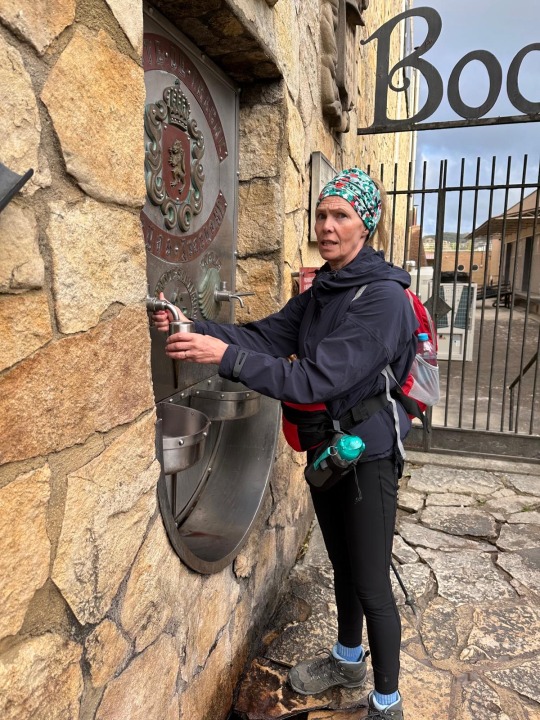
We also passed this metal work place and I remembered it from Tracy’s post last year. Very quirky.

The walk was hilly to start with - I did initially regret not taking the quieter forest route because the village I wanted to see was abit of a building site. But we did get to see this beautiful holy fountain.


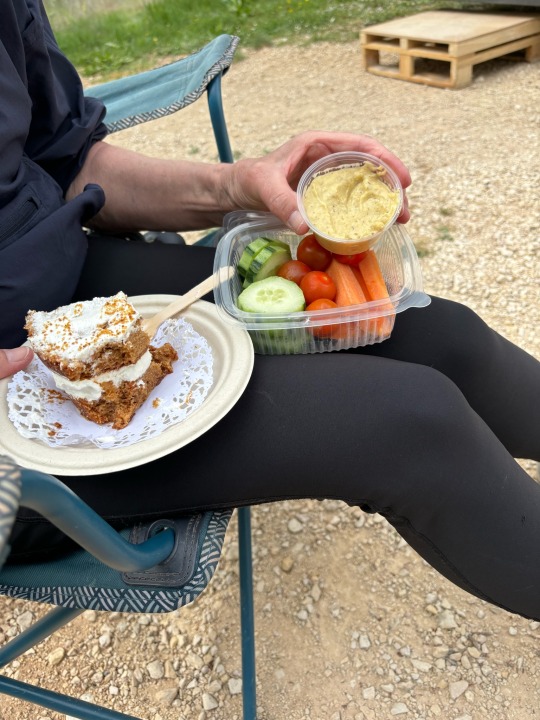
My favourite coffee stop so far. Guess who had cake and who had the carrots?!
We reached Los Arcos just after 1pm. It was getting chilly inspite of the sun so we went to our lovely room (shared bathroom). Cost us 58€ between us.
Then wandered over to the town for a beer. The town is bigger than it appears like most Spanish towns - there’s always a square around each corner.
We rushed back to relax and put more layers on. Its definitely chillier. We met Teresa and Michael for a very satisfying pilgrims meal - again 15€ per person for three courses and wine. Earlier I paid for a round of three glasses of wine and a beer, it came to 5€ 70c. That’s slightly more than my one cappuccino at home!
8 notes
·
View notes
Note
Here to bother you. Pls tell me about your sacraments fic? If you want? Or any creative project you’ve got going
Okay I'm going to tell you about it because I'm so so stuck on how to end chapter one, but I have PRACTICALLY ALL OF CHAPTER TWO WRITTEN IN MY HEAD.
I'm going to be alternating povs (to who knows what effect, because while the illustrious Megan Whalen Turner is able to switch easily between third and first-person points of view in A Conspiracy of Kings, I am not her and merely a loyal subject) between Lucy’s first person point of view and the third person limited pov of Father Frank Carmody, a Canadian, and one of the first priests to brave coming over to England since The Problem reduced to nearly nothing. He's pretty much clueless about ghosts, but he has a whole lot of spirit (pun *absolutely* intended) and fire in his heart for the Lord. He's only intending to be in London for a few years, but I have a surprise for him 😈
The fic is going to cover Lockwood's experiences, either for himself or through other people, with each of the seven sacraments, and also last rites because I've got to make you all suffer (no telling WHO died though :) hehe) as seen through the eyes of Lucy and Father Frank, who is definitely going to become his spiritual father.
Other things I will include:
- George the chastity police!
- at least one joke about NFP because I'm nothing if I'm not traumatizing people with talk of cervical mucus
- angst and fluff!
- Holly as wedding planner
- Carlyle sisters!
- so much grief!
- Lockwood being so dad coded
- Easter Vigil!
- statues (insert gif of Sister Michael here)
- godfather!Kipps
-and so much more!
Also, because I've been taking five million years to get this out, here's the (unedited) first few paragraphs (subject to change!!!):
It was a nervous, if excited, trickle of faces that streamed into the parish hall at St. James’s one bright and blustery early October afternoon. Like all parish halls, it smelled faintly of chafing dishes and stale donuts, with a smidgen of whichever bulk cleaner was least expensive at the shops when the annual order was put in as an undercurrent to it all. Coloring pages of St. Francis of Assisi surrounded by animals graced a bulletin board near the entrance, courtesy of the youngest catechism class, with projects by the other classes lining the rest of the wall. The creaky wooden canteen tables which some parishioners swore were as old as the parish itself found themselves pushed to the side in favor of a large circle of folding chairs. Off to the side, a small table with tea, coffee and biscuits sat neatly by itself, ready to be partaken of. This was the scene Father Carmody entered into the day of the first meeting of the couples to be married in the next year at St. James’s.
Two by two, fourteen couples peeked into the room as though they weren't quite certain if they were in the right spot for marriage preparation, or would instead find themselves in the middle of the frowning semicircle of grannies in charge of plotting the advent coat drive and be drafted into their ranks. Relieved smiles bloomed on their faces as they spotted the cheery, sweater-wearing personage of Mrs. Hubbard, the parish secretary, at the attendance table. Once checked in, name tags written askew on, and pinned to shirts, they ambled across the chipped linoleum floors to snatch some refreshments, and mingled together until the newly familiar voice of Father Carmody called them all over to the circle of chairs that a Knight of St. Columba murmured he and his brother knights had a bloody awful time assembling the evening before, and took their seats in curious anticipation.
#lilac rambles#scribbles and snapdragons#Anthony Lockwood and the Seven Sacraments#asks#answered#answered asks#and rohan will answer
10 notes
·
View notes
Text
THE FOLK/TRADITIONAL BRACKET IS READY - voting to begin in a few hours!!

Top 32 in order:
St Sebastian
St Brigid of Ireland
St Jude the Apostle
St Lucy
St Guinefort
St Lawrence
St Cecilia
St Mary Magdalene
St Agatha
St Dymphna
St Michael the Archangel
St Joseph, husband of Mary
St Catherine of Alexandria
St Elizabeth, mother of John
St George
St Martha
St Peter the Apostle
St Raphael the Archangel
Santa Muerte
St Faith
St John the Apostle
St John the Baptist
St Margaret of Antioch
St Paul
St Matthew the Apostle
St Philip the Apostle
St Agnes of Rome
St Aphrodisius
St Bartholomew the Apostle
St Christopher
St Dismas
St Gabriel the Archangel
#st sebastian#st brigid#st jude#st lucy#st guinefort#st lawrence#st cecilia#st mary magdalene#st agatha#st dymphna#st michael the archangel#st joseph#st catherine#st elizabeth#st george#st martha#st peter#st raphael#santa muerte#st faith#st john the apostle#st john the baptist#st margaret of antioch#st paul#st matthew the apostle#st philip the apostle#st agnes#st aphrodisius#st bartholomew#st christopher
50 notes
·
View notes
Text
Becoming a Knight
The aspirant for knighthood began his career in early boyhood by attending some superior as his page. Lads of noblest families sought to be attached 28to the persons of those renowned in the order, though not to their own fathers, lest their discipline should be over-indulgent. Frequently knights of special note for valor and skill at arms opened schools for the training of youth. The page was expected to wait upon his lord as a body-servant in the bedchamber, the dining-hall, and, when consistent with his tender years, upon the journey and in the camp. It was a maxim of the code that one “should learn to obey before attempting to govern.”
With the development of manly strength, at about his fourteenth year the page became an esquire. He then burnished and repaired the armor of his chief, broke his steeds, led his charger, and carried his shield to the field of battle. In the mêlée he fought by his master’s side, nursed him when wounded, and valued his own life as naught when weighed against his lord’s safety or honor.
The faithful esquire was adubbed a knight at the will and by the hand of his superior. This honor was sometimes awarded on the field of conflict for a specially valiant deed. More commonly the heroic subalterns were summoned to receive the coveted prize when the fight was done. More than one instance is mentioned where the esquire bowed his head beneath the dead hand of his master and there assumed the duty of completing the enterprise in which his chief had fallen. Ordinarily, however, the ceremony was held in the castle hall, or in later times in the church, on the occasion of some festival or upon the candidate’s reaching the year of his majority.
The rite of admission to knighthood was made as 29impressive as possible. The young man, having come from the bath, was clothed in a white tunic, expressive of the purity of his purpose; then in a red robe, symbolical of the blood he was ready to shed; and in a black coat, to remind him of the death that might speedily be his portion. After fasting, the candidate spent the night in prayer. In the morning the priest administered to him the holy communion, and blessed the sword which hung from his neck. Attendant knights and ladies then clothed him in his armor. Kneeling at the feet of the lord, he received from him the accolade, three blows with the flat of the sword upon his shoulder, with the repetition of the formula, “In the name of God, St. Michael, and St. George, I make thee a knight.”
The age of the crusades by James M. Ludlow http://www.gutenberg.org/ebooks/72852
7 notes
·
View notes
Photo
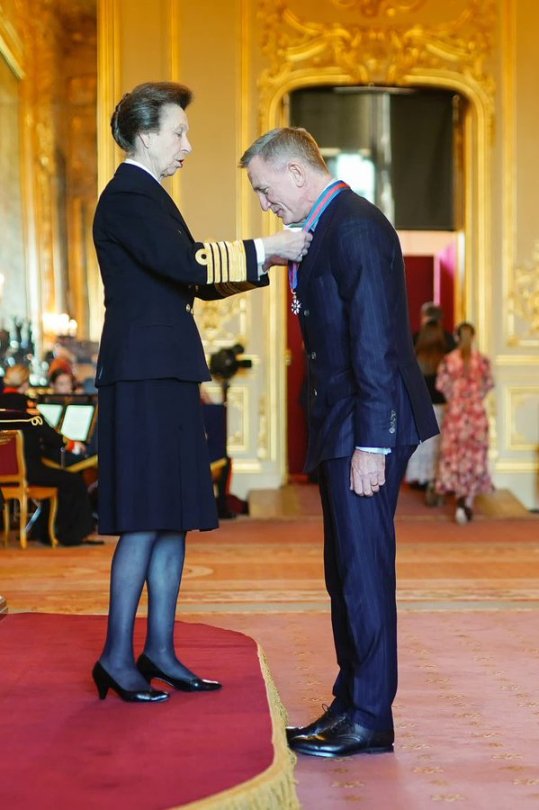
he Princess Royal presents Daniel Craig with The Order of St Michael and St George - the same honour held by his character James Bond - in recognition of his outstanding contribution to film and theatre.
https://twitter.com/wendeeluvz
82 notes
·
View notes
Photo
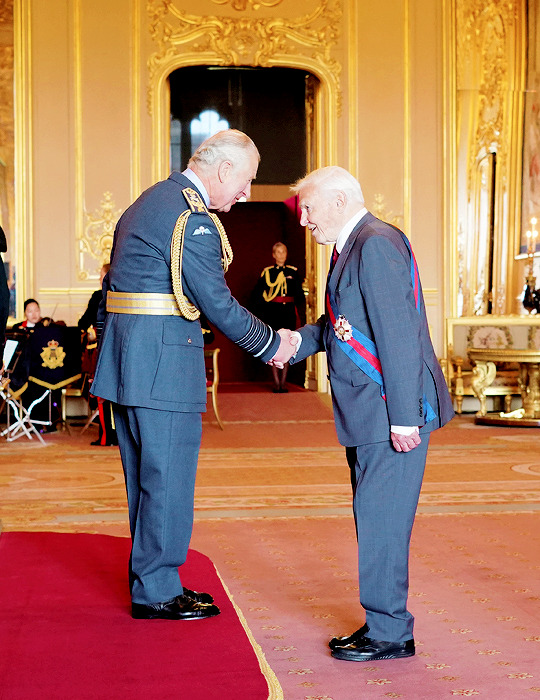
Sir David Attenborough has been made a Knight Grand Cross of the Order of St Michael and St George, for services to Television Broadcasting and to Conservation, by the Prince of Wales at Windsor Castle.| June 8, 2022
201 notes
·
View notes
Photo
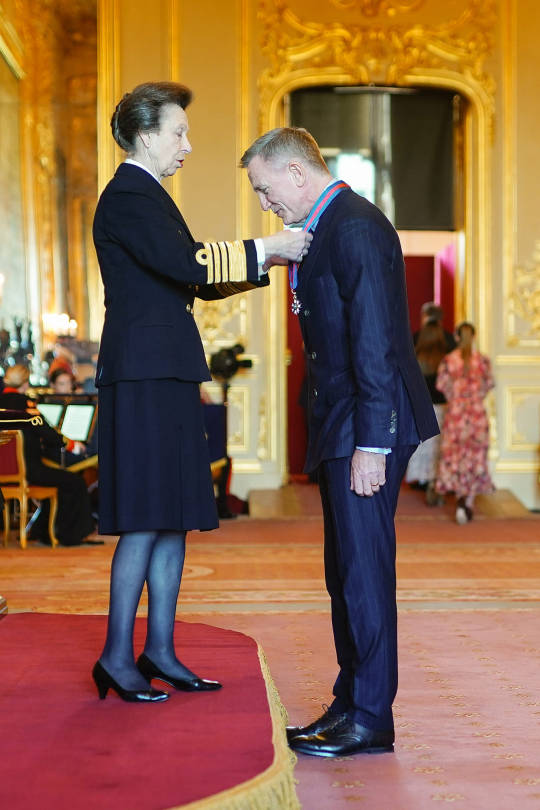
The Princess Royal presents Daniel Craig with The Order of St Michael and St George - the same honour held by his character James Bond - in recognition of his outstanding contribution to film and theatre.
103 notes
·
View notes